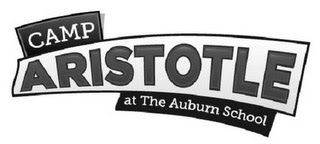The Board reversed Section 2(d) refusals of the mark THE AUBURN SCHOOL and the logo mark shown below, for special need educational services for children, finding the marks not confusingly similar to the registered marks AUBURN and AUBURN UNIVERSITY for university and community education services. The inherent weakness of the geographical term AUBURN coupled with the differences in involved services brought the reversal. In re Capital Schools, Serial Nos. 86931396 and 87048675 (April 23, 2018) [not precedential] (Opinion by Judge Anthony R. Masiello).

Strength of the AUBURN mark: The Examining Attorney contended that the mark THE AUBURN UNIVERSITY is famous, relying on a dictionary definition of "Auburn" as "the seat of Auburn University." The Board pointed out that, even if admissible, this definition does not demonstrate the fame of the university, since dictionaries are "full of information that is not known to members of the public." She also pointed to the university's ownership of 111 trademark registrations, but the Board pointed out that members of the public are not likely to be aware of the number of registrations owned by Registrant, and therefore this fact has little relevance to the renown of Registrant's marks.
Applicant made of record evidence showing that a number of school districts have primary and secondary schools with AUBURN in their names. Most, but not all, are in geographic locations named "Auburn." The term "Auburn," used repeatedly as the name of a geographic location, is inherently weak because consumers may perceive it as a geographic indicator rather than as a source indicator. Although the Board did not find that AUBURN is commercially weakened by third-party use, its inherent weakness "affects the way customers would perceive different marks that contain the term AUBURN, and reduces the degree to which it would be perceived as an indicator of a single source."
The Services: Turning to the services, the Examining Attorney submitted Internet evidence showing that various colleges and universities offer educational programs for younger students, which is apparently what Registrant refers to as "community education." Only two, however, appear to offer special needs education. "As there is little evidence showing that universities offer such services, we question whether members of the public would readily expect that university services and special needs education services would emanate from the same source."
The evidence of third-party registrations was not persuasive. "Very many of the registrations have very lengthy identifications of services, suggesting that the registrants may be atypical." Few of the registrations are owned by universities, and the evidence was not focused on demonstrating a connection between Registrant's services and special needs education.
Although the involved services fall within the broad category of "educations," the record evidence die not persuade the Board that special needs education at the elementary and high school levels is sufficiently related to Registrant's services that confusion as to source would be likely.
The Marks: As to the standard character mark THE AUBURN SCHOOL, the Board found that it creates a similar commercial impression to AUBURN, given that SCHOOL is generic. The logo mark, however, contains many points of difference from Registrant's mark, and therefore the first du Pont factor weighs against likely confusion.
Conclusion: Considering the differences between the involved services and the inherent weakness of the term AUBURN, the Board found applicant's marks to be sufficiently different from the cited marks that confusion as to the source of applicant's services is not likely.
The content of this article is intended to provide a general guide to the subject matter. Specialist advice should be sought about your specific circumstances.
